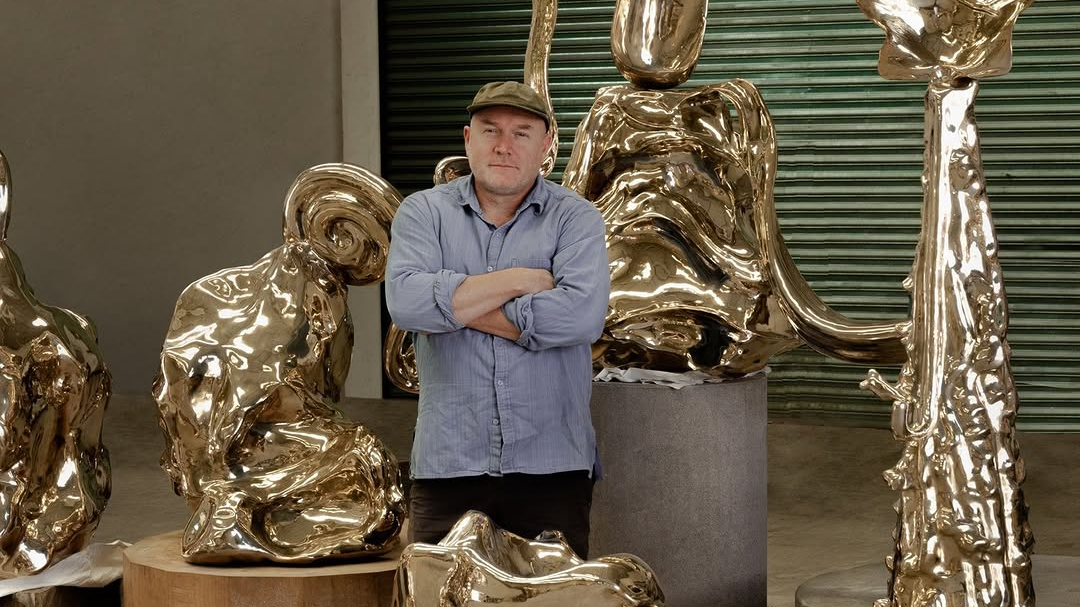Alma Allen: The Sculptor About to Represent the U.S. at the Venice Biennale — And Why the Art World Is Buzzing
Alma Allen, the self-taught American sculptor known for his organic stone and bronze forms, has been selected to represent the United States at the 2026 Venice Biennale. The appointment comes amid major funding and leadership shifts in how the U.S. pavilion is organized. This article explores Allen’s rise, the reaction across the art world, and what his selection means for cultural influence and creative identity.
Alma Allen Is Having His Moment — And the Art World Is Paying Attention
If you haven’t heard of Alma Allen yet, you soon will. The American sculptor, long admired by collectors and insiders but largely unknown to the general public, has just been selected to represent the United States at the 2026 Venice Biennale. That’s the most prestigious and globally visible art exhibition in the world — essentially the Olympics of culture. And Allen’s selection has quickly become one of the most discussed decisions in contemporary art.
What makes it compelling is not just who he is, but how he got here. Allen is a self-taught artist who grew up in Utah, carved sculptures as a teenager, sold early works from a small table in SoHo, and then moved out of the U.S. to build a studio near Mexico City. His quiet rise, far from art school networks and institutional promotion, gives this announcement something rare: the feeling of a story still being written.
From SoHo Street Sales to Global Spotlight
Allen doesn’t fit the traditional mold of the American art star. Born into a large Mormon family, he started sculpting young and found his voice without formal art training. In the 1990s, when SoHo was still pulsing with street-level creativity, he set up a folding table and sold hand-carved wooden pieces directly to passersby.
His early supporters were people who reacted emotionally, physically, even instinctively to the strange and elegant shapes he created. When you see an Alma Allen piece — whether towering in bronze or smooth and palm-sized in stone — it feels almost alive, like something pulled from another world rather than carved into this one.
“I try to make objects that feel alive,” Allen once said in an interview. “The material tells me what to do.”
That ethos remains central today. Working in Mexico, Allen and his small team create sculptures that range from hand-held pieces to massive stone works that weigh thousands of pounds some carved using robotic technology he developed in-house.

Alma Allen
Why the Venice Biennale Selection Matters
Representing the U.S. at the Biennale is a career-defining honor. It means international prestige, museum invitations, curatorial attention, collector demand — and a lasting place in cultural history.
But this year’s decision is even more layered than that.
A newly formed organization, the American Arts Conservancy, oversaw the pavilion selection, partnering with the U.S. State Department. That marked a shift from how the U.S. has typically handled its Biennale presence, and the change has sparked conversation about influence, priorities and the future of American cultural diplomacy.
The Biennale isn’t just art. It’s politics. It’s soft power. It’s image. And now, Alma Allen is the face of the U.S. pavilion.
The Art World’s Reaction: Surprise, Admiration, Curiosity
Allen has never had a major solo museum show in the United States a detail that has sparked intense fascination. Some critics see the selection as bold and overdue; others see it as a dramatic signal of changing curatorial values.
Stephanie Seidel, a curator at ICA Miami who has worked with Allen’s pieces, once said:
“His work has an otherworldly presence. It feels familiar and alien all at once, like it has its own consciousness.”
That quality — unclassifiable, emotional, tactile is part of what makes his selection meaningful. In a moment when contemporary art often leans conceptual, Allen’s pieces speak directly to the senses.
You don’t need a theory to feel something.
The Financial and Cultural Stakes
Although the Biennale has enormous cultural weight, the costs are substantial. A U.S. pavilion can run into the millions once you factor in transportation of large sculpture, fabrication, installation, curatorial staffing, travel, and the exhibition build itself.
Government contributions typically cover only a fraction of that. The rest comes from donors, sponsors, galleries, collectors or institutional partners.
According to analysis reviewed by CEO Today, the new organizational structure behind the 2026 pavilion could influence everything from donor strategy to long-term museum relationships.
This moment isn’t just about artistic representation it’s about how cultural capital is funded, controlled and presented on the world stage.
Why Audiences Keep Talking About Alma Allen
There’s a human story here. A quiet one. A persistent one.
No celebrity persona.
No scandal.
No viral sensationalism.
Just decades of making work, refining the unseen, and following an internal compass that pointed to materials, shape, intuition and patience.
And suddenly, the world is watching.
What Happens Next
Over the next year, the art world will see:
-
Major museum attention on Allen’s existing work
-
Rising demand from collectors and galleries
-
New scholarship, interviews and retrospectives
-
Increased interest in American artists working outside institutional systems
The Venice Biennale opens in April 2026, and Allen’s pavilion will almost certainly become one of the most discussed American entries in years — not because it is loud, but because it signals a shift in what American cultural representation means right now.
Final Thought
Alma Allen’s rise is not just a story about art. It’s about persistence. It’s about the power of slow-built mastery in a world driven by speed. And it’s a reminder that sometimes the most profound movements begin quietly — at a folding table in SoHo, with a block of wood and a person who believed in shapes no one else could yet see.














